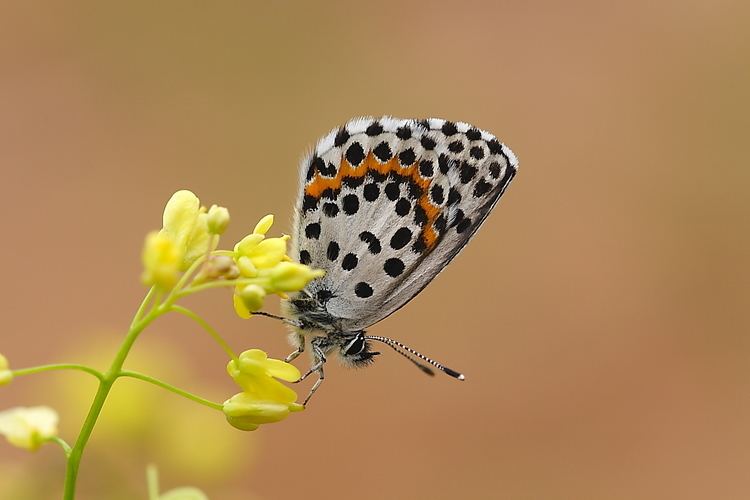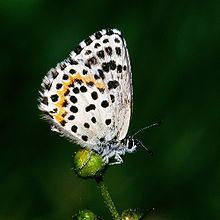Higher classification Scolitantides | Scientific name Scolitantides orion Rank Species | |
 | ||
Similar Butterflies and moths, Glaucopsyche alexis, Plebejus argyrognomon, Eumedonia eumedon, Lycaenidae | ||
Myrmecophily lasius niger attracted by caterpillars of scolitantides orion
Scolitantides orion, the chequered blue, belongs to the Lycaenidae family (gossamer-winged butterflies). It is found in Europe, Russia and east across the Palearctic to Japan.
Contents
- Myrmecophily lasius niger attracted by caterpillars of scolitantides orion
- The chequered blue scolitantides orion
- Subspecies
- Description in Seitz
- References

The chequered blue scolitantides orion
Subspecies


The male is 13 to 16 mm. In France there is usually a single generation flying in May and June, sometimes there are two generations May then September. The butterfly lives in rocky areas up to 1000 m of altitude, on plants such as Sedum telephium and Sedum album.
Description in Seitz

Above and beneath rather similar to Pseudophilotes baton but larger and darker, recognizable by the fringes being very distinctly spotted and the white underside abundantly and heavily spotted with black, the hindwing beneath bearing a bright orange-red submarginal band. Throughout Europe, western and northern Asia, excepting England, the Arctic countries and Japan; from Finland to the Mediterranean islands and from the Atlantic to the Pacific.
